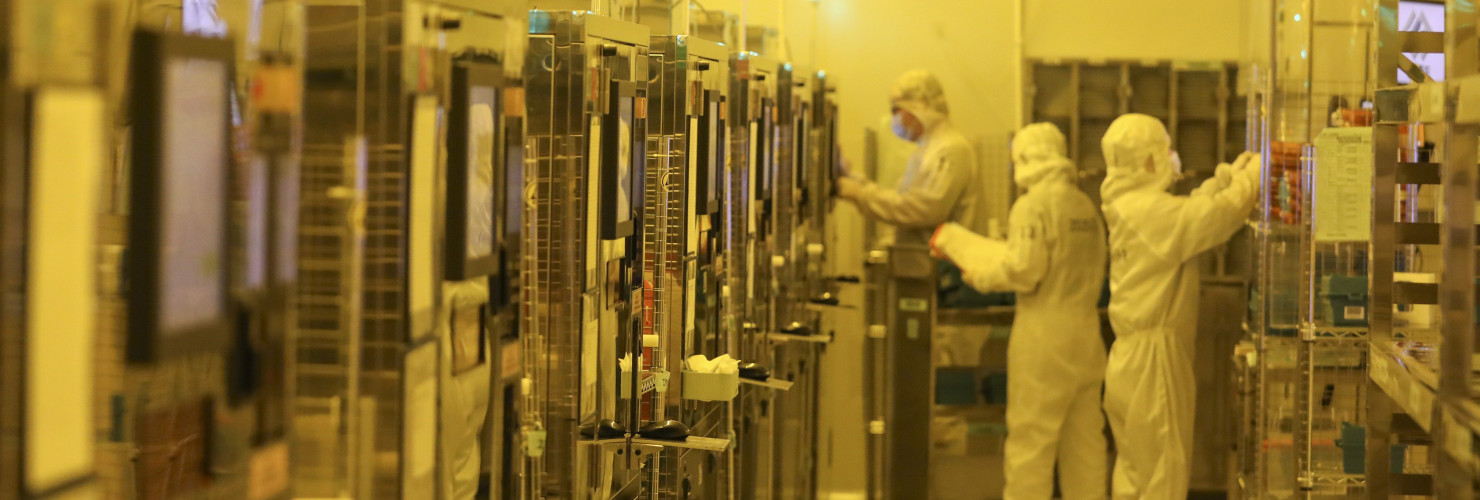

To stand up to US pressure, Europe needs better intelligence on China’s innovation system
The US strong-arms Europe into stricter export controls against China. If the EU wants its own say, it must improve its science and technology intelligence and assessment capabilities.
Under US pressure, the Netherlands last year banned its semiconductor champion ASML from selling its most advanced deep ultraviolet lithography machines to China. ASML’s technology could be used to produce chips for advanced military applications and weapon systems, the Americans argued. When Washington went further and prevented ASML from selling older gear to China, overriding previous negotiations with the Dutch government, some foreign policy experts urged the Hague to stand up to US coercion.
For all legitimate frustration with US strong-arm tactics, however, Europeans have a much bigger problem: Science and technology (S&T) intelligence capabilities in most capitals lag the pace of technological and geopolitical change. So long as Europe relies on the US for information about China’s growing capabilities in critical technologies, from semiconductors to artificial intelligence (AI) and quantum, it will remain reactive. Beefing up technical expertise in government would be a precondition for engaging with Washington on European terms when it comes to dual-use export controls and their effective use against systemic rivals like China. Dual-use items are goods, software or technologies that can be used for both civilian and military applications.
EU export controls are narrower than those in the US
At present, EU export controls are narrower than those in the US and interpreted widely at national level. First, the EU lacks an equivalent of the US blacklists such as the Entity List, a trade restriction list of certain foreign persons, companies or organizations the US views as a security concern. It is unclear whether Brussels and member states would prevent specific users (beyond sanctioned entities) from receiving unlisted dual-use items. Second, national governments may only impose export controls if they believe the commodities, technology or software in question could enable the development of weapons of mass destruction or a military end-use in an arms-embargoed country. The EU’s arms embargo against China is non-binding and each capital interprets it as it pleases. Third, member states can also add new listings for human rights reasons or other unclarified “public security” considerations—as the Netherlands did.
To be sure, there’s been some progress in recent years. The European Commission is aligned with Washington on the need to expand dual-use export controls. Its economic security strategy proposed an EU-wide assessment of security risks related to certain sensitive technologies, particularly when they are leaked to adversarial actors. It also proposed steps for making the bloc’s controls more agile, like empowering member states to jointly add new items to the EU’s dual-use list outside of the multilateral Wassenaar Arrangement, which is currently at a stalemate because Russia is a member. In an annex to the 2021 US-EU Trade and Technology Council Inaugural Joint Statement, the transatlantic partners moved the needle on export controls, pledging, among other things, to address “legal, ethical, and political concerns” associated with emerging technologies, as well as the “technology acquisition strategies” and “civil-military fusion policies” of “certain actors.” Enter China.
EU member states have also shown increasing initiative in capturing new technologies in their national control lists, using the flexibility awarded by Article 9 of Regulation 2021/821 (the EU Dual Use Regulation). Spain last year introduced new controls relating to quantum computing, among other emerging technologies. France followed in February 2024, while Finland is considering introducing a national control list to protect quantum and advanced semiconductor manufacturing.
To sustain this momentum, the EU will need adequate analytical capabilities. Emerging technologies such as AI and quantum are evolving at record speed. The underlying hardware, principally semiconductors, is widely commercially available. It is complex to identify the technologies that may need protection, who in China is using them and for what purpose. China has reinforced its secrecy around science and technology information, also to circumvent foreign export controls. This makes it even harder for experts in and outside government to monitor new developments.
Pooling resources and information will be essential
Although some EU member states are already more advanced than others when it comes to technology assessment and China expertise, progress shouldn’t be confined to individual countries: Pooling resources and information will be essential to ensure a harmonized approach. It doesn’t help if France restricts quantum technology exports while China can build chips for dual-use quantum computers using German equipment. Moreover, because this work needs input and buy-in from the stakeholders who understand technology and China’s innovation system, including scientists, engineers, think tanks, and industry, it cannot be left entirely to the intelligence community.
An EU office for technology assessment that also monitors developments in countries of concern, including those that may lead to national security, human rights, and economic security risks, could help. The European Commission’s Joint Research Center conducts relevant work and houses China and export control expertise, but it needs more resources and a mandate to monitor China’s tech ecosystem. It should also better sync with the work of the Emerging Technology Expert Group, which helps the EU assess risks from the transfer of emerging dual-use technologies. Setting this up wouldn’t be easy, not least because some of the data and analysis would have to be classified. Still, just because something is hard doesn’t mean governments shouldn’t do it.
It may be true that the US pressured the Netherlands over ASML, but there is at least one possible counterfactual: What if the Dutch believed the intelligence they were shown? The Chinese government blurs the lines between civilian, military and security-relevant S&T in an effort to steer the national innovation system toward strategic goals. Information will be Europe’s best weapon in this global competition for the technologies of the future.
A version of this commentary ran on the website of the Center for European Policy Analysis (CEPA) on May 20, 2024.
